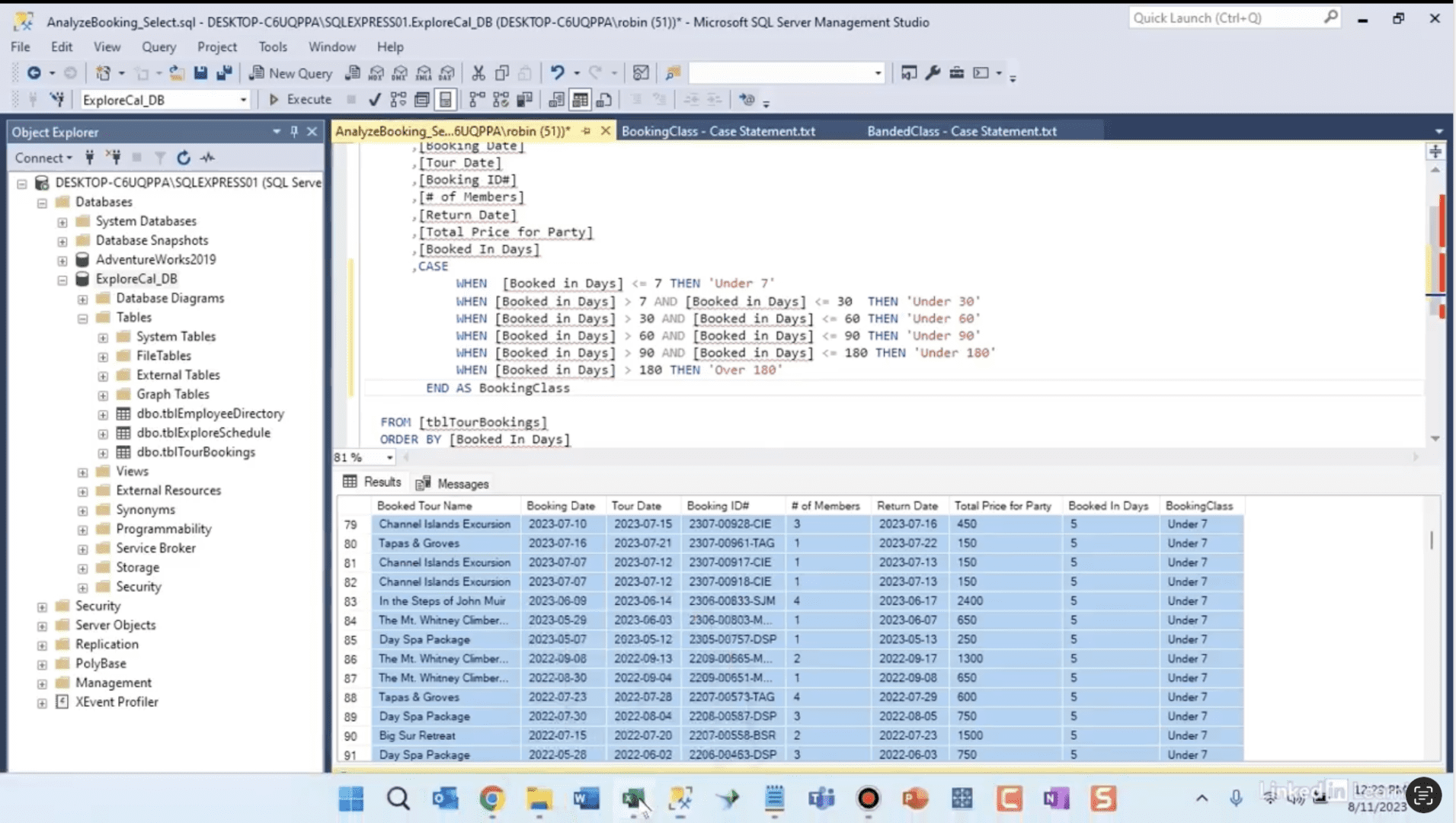Using Case statements for conditional logic in SQL queries
Using Case statements for conditional logic in SQL queries
Creating CASE statements in SQL queries is important because it allows you to add conditional logic directly into your data retrieval process. Here’s why it’s valuable:
Data Transformation: CASE statements let you transform data on the fly by applying different logic based on specific conditions. For example, you can categorize values, convert nulls to defaults, or create new columns based on existing data—all within your query.
Simplifying Complex Queries: By incorporating conditional logic directly into your SQL query, CASE statements reduce the need for multiple queries or complex joins, simplifying the overall query structure and improving readability.
Dynamic Data Analysis: CASE statements enable dynamic analysis by allowing you to create customized outputs. For instance, you can generate different labels, group data differently, or calculate conditional sums and averages, making your results more meaningful and tailored to your specific needs.
Enhanced Flexibility: With CASE statements, you can handle diverse scenarios within a single query, making your SQL code more flexible and powerful in responding to various data analysis needs.
In summary, CASE statements are crucial in SQL for transforming, simplifying, and customizing data outputs, making your queries more efficient and your results more insightful.
In this video, Robin continues to explore booking data, this time incorporating SQL queries and Case statements to classify data and highlight meaningful trends in her dataset.
If you’re a data analyst, you’ve no doubt learned different skills, techniques, and tools pertaining to data. But sometimes it can be difficult to know when and why to apply these tools. In this weekly series, instructor Robin Hunt explains a new skill, secret, tip, technique, best practice, or golden piece of advice in each installment. Robin covers topics that can help you do your job better, such as joining data and data designs, privacy for data, transforming and cleaning data, and making data sets and visualizing data.
Note: Because this is an ongoing series, viewers will not receive a certificate of completion.

